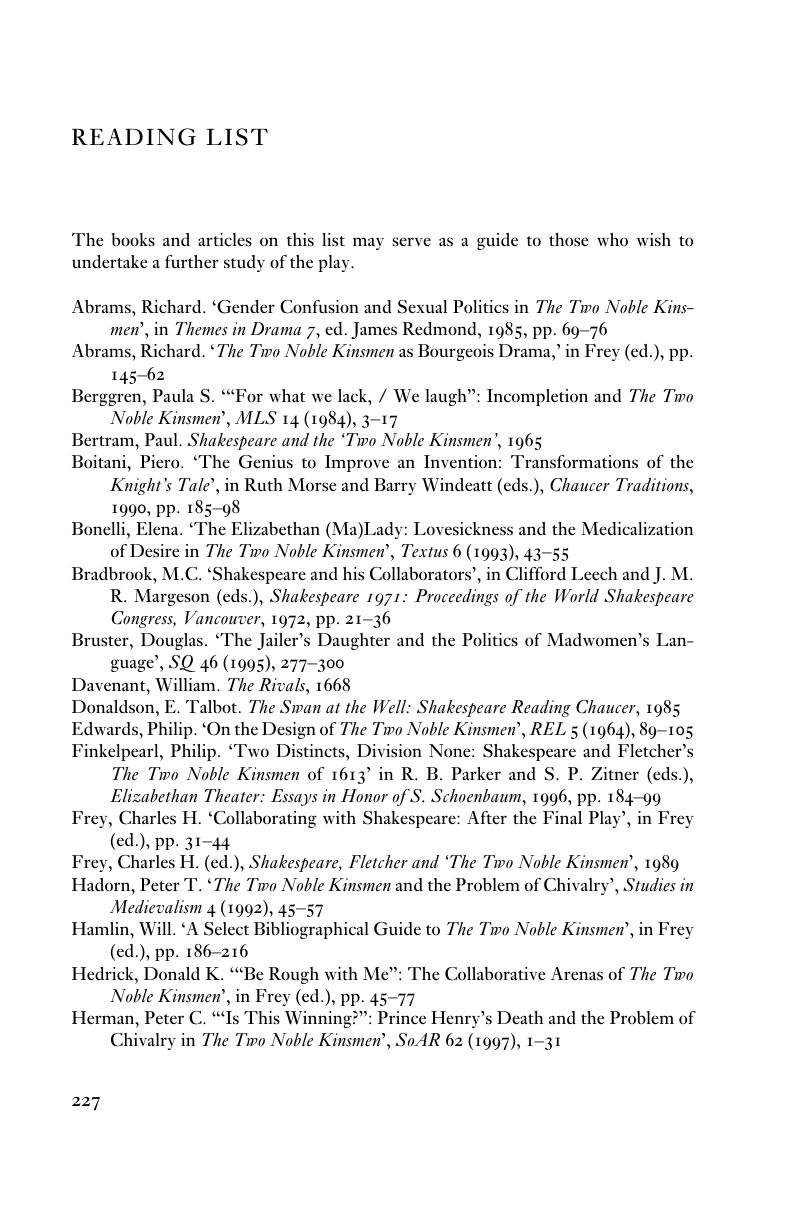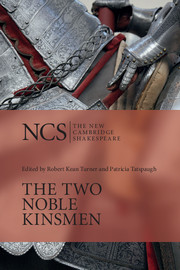Book contents
- The New Cambridge Shakespeare
- The New Cambridge Shakespeare
- The Two Noble Kinsmen
- Copyright page
- Contents
- Illustrations
- Acknowledgements
- Abbreviations and Conventions
- Introduction
- Note on the text
- The Two Noble Kinsmen
- Supplementary Notes
- Textual analysis
- Appendix: Productions, Staged Readings, And Recordings, 1928 to 2011
- Reading List
- References
Reading List
Published online by Cambridge University Press: 05 June 2012
- The New Cambridge Shakespeare
- The New Cambridge Shakespeare
- The Two Noble Kinsmen
- Copyright page
- Contents
- Illustrations
- Acknowledgements
- Abbreviations and Conventions
- Introduction
- Note on the text
- The Two Noble Kinsmen
- Supplementary Notes
- Textual analysis
- Appendix: Productions, Staged Readings, And Recordings, 1928 to 2011
- Reading List
- References
Summary

- Type
- Chapter
- Information
- The Two Noble Kinsmen , pp. 227 - 229Publisher: Cambridge University PressPrint publication year: 2012



